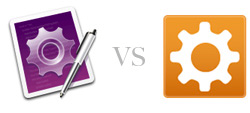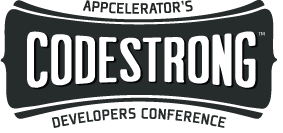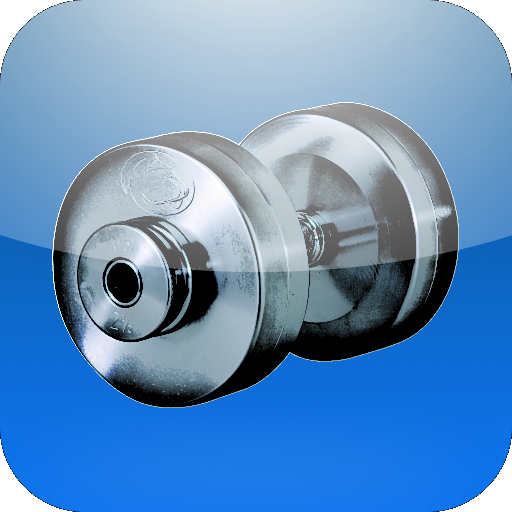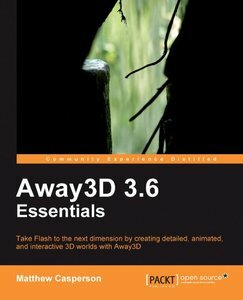The People
As it turns out, the co-founders and core developers of PhoneGap are pretty accessible guys. Who better to know when it comes to using a framework than the authors? Everything from basic “getting started” questions to more complex topics from me have been addressed directly by one or more of their team. While there’s probably a ton of people I’m not mentioning, these few guys in particular have been exceedingly helpful.
- Andre Charland ()
- Brian Leroux ()
- Dave Johnson ()
- Michael Brooks ()
- Fil Maj ()
- And the PhoneGap Twitter account ()
I’m a Twitter fiend so that’s generally where I find these guys, but make sure you also check out their and IRC. I’ve said this before… if you are doing PhoneGap development and aren’t following this crew on Twitter, then you’re an idiot.
PhoneGap Build
So you hear about all these frameworks that do cross platform mobile development, “code once, run everywhere”, and everything just magically works. Well… it ain’t that simple. You’ve got SDK installations, developer & signing certificates, build chains, and custom project layouts to worry about with each platform. While this can become a nightmare to manage, PhoneGap makes a pretty epic effort to help with their currently free, beta service called PhoneGap Build.
PhoneGap Build will allow you to give them the web code that drives your app and in return you will get App Store deployable binaries back for all the platforms listed in interface snapshot above. You don’t have to install all the SDKs. You don’t need to worry about any platform specific setup. It is actually that simple.
I highly suggest setting up an account right this second, especially if you are just starting out as a mobile developer. The time consuming, and often frustrating, nature of multi-platform testing and deployment is easy to underestimate. When you’re learning the ropes of mobile APIs and the finer points of app creation, the last thing you want to worry about is every individual SDK’s varying degrees of compatibility. Which leads me to my next section…
PhoneGap Generate
If you are like most mobile developers, you are a (proud) owner of the 4+ GB behemoth of a download XCode 4. The good news is that you can build apps for iOS 4+ with it. The bad news is that XCode 4′s default configuration settings are not compatible with PhoneGap, and it can be a bit complicated to resolve. Here’s the bloody path I took to .
But in their constant efforts to make the build process easier on developers, PhoneGap came up with a short term solution. Instead of hacking up your XCode 4 project files, let PhoneGap do it for you! Enter PhoneGap Generate. Its an extension of the PhoneGap Build site that will, given a project name, generate an XCode 4 compatible project for you. While it’s not an ideal situation, it can save you some of the headaches I endured trying to do it myself. Hopefully the PhoneGap distribution will have this resolved in the near future.
Cordova
Now we’re getting to the real goodies. is without question the single biggest boost to my PhoneGap development workflow. Think PhoneGap Build with no need for the cloud.
, in Brian Leroux’s (author) own description, is
A PhoneGap project toolchain that automates common tasks for building cross platform mobile projects with OS X.
Automate common development workflow tasks such as: compiling, debugging, testing, releasing and other things in between. As an added benefit projects generated with Cordova create a consistent, predictable, easy to understand and therefor extend software project. A number of conventions are introduced removing the need for mobile developers to relearn their tools or, worse, rebuild them for every project.
Be warned, Cordova is young and best used by those with a good understanding of how PhoneGap works in terms of project layout, building, testing, and deployment. It also helps a great deal if you understand these concepts as they relate to each platform (i.e., Android, iOS, Blackberry, etc…) you plan to target. And you’ll need to me comfortable with the Terminal on Mac OS. If I haven’t scared you off yet, read on.
Basically, you can build and test PhoneGap apps for multiple platforms with simple Terminal commands. No more creating projects in XCode or Eclipse just to conform to a specific platform. You can choose your favorite web development IDE (Aptana for me) and do all your work there. When you’re done, just run one simple command from the command line and it will build for iOS, Android, and even Blackberry (with a Windows VM). Check out this short demo from Brian Leroux to see what I mean.
Yeah, its low level and it doesn’t have a pretty GUI, but man this project has massively improved my efficiency in terms of cross platform testing. I’m hoping more people see this project and hop on board, and even contribute like I did (Blackberry support). A tool like this can really be a game changer in terms of what a single developer can do for a mobile app spanning a multitude of platforms.
You don’t have to use Platform-specific IDEs

According to the PhoneGap docs on the “Get Started” page, I need XCode if I want to build iPhone/iPad apps, Eclipse for Android, a Windows based IDE for Blackberry, its a serious pain in the ass. But these are web based solutions, right? Why in God’s name would I want to endure XCode and Eclipse as web development IDEs?! I wouldn’t, and I don’t have to.
You’ve got 2 options when it comes to developing your apps if you don’t want to use the platform specific IDEs (and you shouldn’t).
- Develop your web code in your IDE of choice. When its at a point you want to test it on a specific platform, copy the web code into a PhoneGap project built in the platform specific IDE. For example, if you like TextMate, do all the web coding in TextMate and when you are ready to test it on Android, copy the web code into the assets/www path of your Eclipse Android project. Run and test from there.
- Use . You can do your web code in your IDE of choice and simply run ‘make debug’. In the current incarnation of Cordova, this will open your web code in the iPhone, Android, and Blackberry simulators. Reference the for more details on usage. In the near future I’m planning a blog post on that very subject.
The long and short of it is that the platform specific IDE workflows are not optimal for web development. Find the tools that best suit you and your web development style, use them, and only spend your time in platform specific IDEs when necessary. The time you save using a full featured, web-focused IDE makes up for the less-than-fun process of having to copy and paste code to platform specific IDEs. You save even more time if you use Cordova. Have I pimped Cordova enough yet?
The Supported APIs (per platform)
So as you probably already know, you can find all of PhoneGap’s documented mobile API support at docs.phonegap.com. What you might not be aware of is that they have done a really good job of documenting which APIs are supported by which platforms.
On a function by function basis, the “Supported Platforms” section lets you know down to the OS version which platforms support it. The trailing “Quirks” section let’s you know which platforms may not behave as expected. Not only that, but the “Quirks” are typically accompanied by workarounds to make your life a little easier.
If you are doing cross platform mobile development, get used to the fact that you are going to be spending time dealing with inconsistencies, regardless of framework choice. Having documentation with this level of detail will surely decrease that time, as well as prevent you from hitting unforeseen dead-ends in your app development. RTFM, its worth it.
PhoneGap can technically do anything
PhoneGap does its best to expose platform specific mobile APIs in a bare bones, clean, abstracted manner. While this does create a reliable experience in development, it does leave some things you might want off the table. The big thing, for example, is native UI components. While “native” anything seems to be contradictory to cross platform development, its still a common request (see Appcelerator or even this PhoneGap based solution). So how do you go about offering platform specific functionality in a PhoneGap app? With plugins.
Plugins allow you to write native code for a specific platform in order to extend the PhoneGap framework. For example, you could write code for handling , then write some Javascript to hook your native code to the PhoneGap framework, then use this native functionality in one of your PhoneGap apps. OK, I didn’t give an entirely clear account of what is necessary, so just reference the PhoneGap wiki for details on plugin development. The wiki currently contains step by step instructions for Android, iOS, and Blackberry. Here’s the resources you should be checking out.
- How to Create a PhoneGap Plugin for Android
- How to Create a PhoneGap Plugin for iPhone
- How to Create a PhoneGap Plugin for Blackberry WebWorks
- Jesse MacFadyen’s () collection of
They Want You!
 PhoneGap is an open source project. Very open source in fact. As though the BSD or MIT licenses weren’t liberal enough, PhoneGap gives you the choice of applying either to your work. As long as you keep their copyright notices in your code and don’t use their name to promote your product, you can use their code however you wish, commercially or otherwise.
PhoneGap is an open source project. Very open source in fact. As though the BSD or MIT licenses weren’t liberal enough, PhoneGap gives you the choice of applying either to your work. As long as you keep their copyright notices in your code and don’t use their name to promote your product, you can use their code however you wish, commercially or otherwise.
How does PhoneGap benefit from this? Well, licensing like this tends to create bi-directional generosity. By this I mean the community commonly contributes to PhoneGap and its plugins and tools. You can go to Github right now and fork your own copy of the whole PhoneGap framework (among other things) at the .
So if you use PhoneGap and write some custom code you think others can benefit from, consider giving back to keep the spirit of open source alive. Otherwise you’re a jack ass.
weinre
Can’t believe I forgot this one. I’ll make this brief as your best bet is to read more at its website: ().
Basically, weinre lets you debug web pages remotely. What does this mean for PhoneGap? This means you can debug your native PhoneGap apps either on device or simulator. It alleviates one of the biggest time sucks of web based mobile development, which is the silent dismissal of malfunctioning Javascript calls. But now instead of your exceptions going the way of /dev/null, you can debug and log your execution as you would any other application. Oh, and Cordova has weinre built in.









Nice write-up, thanks for the shout-out!
Nice Article! P.S. You can also reach the Nitobi guys at the official PhoneGap facebook page!
[...] 9 things to know about PhoneGap [...]
This review is pretty biased don’t you think. If you have some eperience with C++ and Java, you are far better off to just use the native development IDE’s. They are excellent tools that have been time tested. It seems the selling point here is for people who are scared to open Xcode or Eclipse or have little to no programming experience with Objective-C or Java, two of the most in demand and highest paying programming languages.
@slayer: You read a blog post about a single mobile technology that makes no negative mention of any other mobile platform. What exactly here is biased? Do you consider it biased when someone reviews any product that doesn’t mention the ones you like as well?
The selling point here is not reinventing your mobile apps every time you need to support a new platform. In some cases individual native apps for each platform make sense, like when the app is part of your core service offering. In many cases though, people just want a mobile presence. Typically this is a fairly simple app that needs to be deployed to as many different mobile platforms as possible. In these cases, which are many, technologies like PhoneGap are an appropriate solution.
You should consider doing your homework as well, because unless you are using Cordova, you need to open Eclipse and/or XCode to do PhoneGap development. Oh, and I guess you missed the links on the left sidebar to the download and source code for my native iPhone and Android fitness app. Don’t worry, there’s another native Android one on the way!
As you can see, developing native mobile apps doesn’t necessitate evangelistic elitism. Something to think about.
@TonyLukasavage Excellent post. *Really* well done.
@slayer My take from a development manager’s viewpoint: If the use case is targeting a specific device platform (eg iPhone only), or resources aren’t highly constrained (ie I can afford to have developers/teams targeting each device platform-very unlikely in today’s economy), then I will most likely choose the native code app path. However, absent those (2) special use cases, I will always choose the PhoneGap route so that I can use the minimum resources to cover the maximum possible device platforms.
Even if, after the Phonegap app is built, a decision is made to migrate from a PhoneGap web app solution to a native solution (eg performance concerns or hot product means increased budget), then at least I will have created a working prototype in the quickest amount of time that can still serve as a viable candidate for all of the platforms until such time as I can deliver native code options.
For me at least, this is one of the easiest development management decisions that I have had to make.
Hi
Want to Know if there is a Cordova equivalent for windows
Thankx
@marco: Not right now, and I’m not sure if there will be without some serious community support for 2 big reasons. 1, you can’t deploy to an iPhone simulator/device on a Windows system. 2, Cordova relies heavily on the terminal commands. Perhaps something could be created with cygwin, but I don’t think its in the works currently. Even the Blackberry support I added to Cordova requires the you run the scripts on Mac, but the Blackberry simulator is actually launched on a Windows (virtual) machine.
You can always use PhoneGap Build, though, to create binaries for multiple systems.
Doesn’t it take a bit more time to develop a mobile app with PhoneGap while you are constantly going back and forth between two IDE’s to test it? I presume your usual standard IDE would be mostly useful for building UI and front-end of the App, while you still have to transfer about 50% or more of development to platform specific IDE ? Am I wrong?
has any tried using cordova for phonegap 1.4.1? Pretty sure I have everything setup correctly, but can’t get “make debug” to work (returns error code: 1).